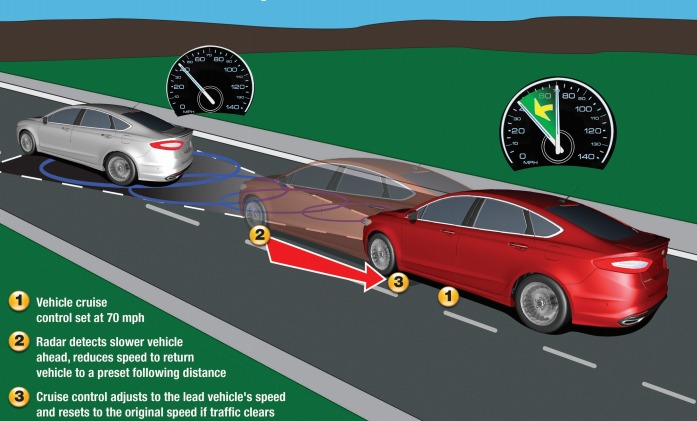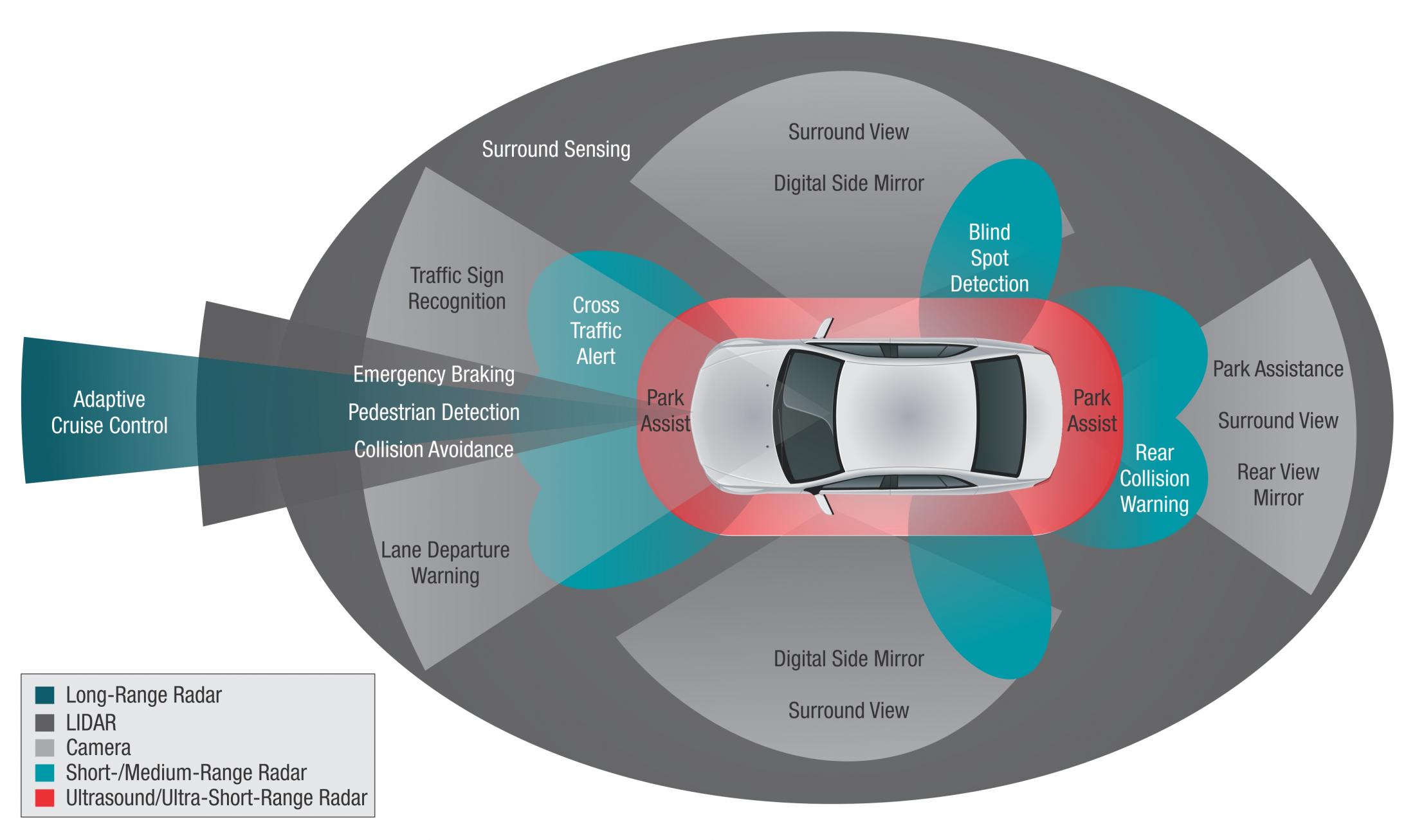
Buying a used car does not mean you have to sacrifice safety, as newer vehicles offer safety features unheard of even five years ago.
There are more popular options found on more recent used vehicles, and there are some features that no vehicle should be without.
Adaptive cruise control
 Traditionally, cruise control was a single-function feature on cars and trucks. When turned on, it would maintain a preselected speed by either increasing or decreasing engine power. The basics of this system go back to the early 1900s, with actual cruise control arriving in 1948.
Traditionally, cruise control was a single-function feature on cars and trucks. When turned on, it would maintain a preselected speed by either increasing or decreasing engine power. The basics of this system go back to the early 1900s, with actual cruise control arriving in 1948.
While it had advantages in reducing fatigue and excessive speeding, cruise control was essentially an unintelligent system. It would only maintain a given speed and had no way to determine if that speed was safe for the conditions, such as going around a sharp corner or passing over a wet surface.
Adaptive cruise control has been an option in certain vehicles since 2006. Rather than a speed system, it is more sophisticated in its analysis of the outside environment and will adapt to the conditions.
Some vehicles can sense obstacles and apply brakes to maintain a safe distance. Others will use GPS references to adjust speed to the legal limit for different segments of a given road or receive live updates for hazards and construction. adaptive cruise control reduces your risk of collision while relieving driver decisions.
Blind spot sensors
Poorly adjusted mirrors, high seat backs and narrow rear windows can leave entire regions invisible to drivers. The development of blind spot sensors and cameras has eliminated this problem on nearly all modern vehicles.
In some vehicles sensors are active only while in reverse, while in others they are active full-time. They can help drivers avoid being one of the 800,000 blind-spot-related accidents in the United States.
Lane keeping features
 Lane keeping technology can be in the form of an alert that lets the driver know when they have departed a lane. More advanced versions will actually command braking, steering or selective wheel acceleration to get the vehicle back into the lane if the driver does not respond to the alert.
Lane keeping technology can be in the form of an alert that lets the driver know when they have departed a lane. More advanced versions will actually command braking, steering or selective wheel acceleration to get the vehicle back into the lane if the driver does not respond to the alert.
This technology can prevent sideswiping a vehicle in an adjacent lane, hitting a vehicle approaching head-on in the opposing direction and prevent rollovers from driver over-corrections.
Airbags
Airbags are standard equipment on all vehicles. No longer just for the driver, airbags also protect passengers in the front and rear seats. Side impact airbags inflate to prevent injury in T-bone and intersection types of collisions.
There have been problems with certain manufacturer's airbags, but automaker recall fixes should render them safe.
Safety upgrades
 Most late model pre-owned vehicles come standard with some or all of these safety enhancements. Some dealers will add certain safety features like backup cameras to used vehicles as part of the purchase agreement.
Most late model pre-owned vehicles come standard with some or all of these safety enhancements. Some dealers will add certain safety features like backup cameras to used vehicles as part of the purchase agreement.
Be aware that features like lane keeping may not be available if the vehicle is incompatible with the servo-mechanisms used to control the steering system.
To find a vehicle that protects you and your passengers, check out the inventory of technologically advanced cars and trucks at Mike Duman.com, Virginia's used car superstore.
